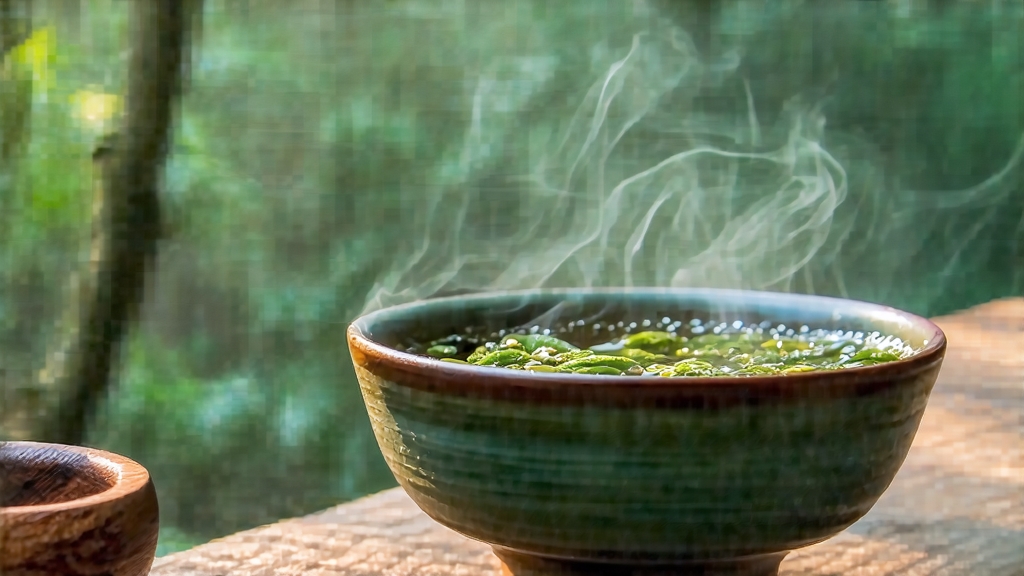
Few names in the vast lexicon of Chinese tea carry the mystique of Tie Guan Yin, the “Iron Goddess of Mercy.” To the people of Anxi County in southern Fujian, she is more than a cultivar; she is a patron saint whose spirit is infused into every emerald leaf. To the global tea traveler, she is the gateway drug that turns a casual sipper into a lifelong oolong devotee. This essay invites you to walk the cloud-veiled ridges of Anxi, to hear the clack of bamboo trays and the sigh of charcoal embers, and to taste the liquid jade that has seduced emperors, poets, and now, perhaps, you.
-
Myth and Migration: A Story Written in Rock and Mist
Local legend claims that in the 18th century a poor farmer named Wei Yin found a deserted iron statue of Guan Yin, the Bodhisattva of Compassion, hidden in a crevice of Anxi’s rocky terrain. After carrying the heavy icon home and burning incense daily, the goddess appeared in a dream and guided him to a solitary shrub shimmering in the moonlight. Wei transplanted the bush to his courtyard, propagated it, and named the tea in her honor. Historians prefer a less miraculous but equally romantic narrative: a Xiping village scholar-monk refined an older tea called “Bei Guan Yin,” selecting only leaves that could endure the labor-intensive shaking and rolling that would later define Tie Guan Yin style. Whichever version you choose, the plant’s genetic fingerprint is unmistakable—an offspring of the rare “Red Heart” (hong xin) cultivar whose tender stems blush crimson when snapped. -
Terroir: Where Granite Breathes into Tea
Anxi sits at 25° north latitude, 500–800 m above sea level. The county’s spine is a chain of weathered granite peaks that trap monsoon clouds, creating a perpetual spring of 70–85 % humidity and a diurnal swing of 10 °C. These swings slow the conversion of amino acids to catechins, concentrating sweet L-theanine and floral volatiles while keeping astringency low. The soil is lateritic, rich in iron and potassium, and so porous that rain vanishes within minutes, forcing roots to dive three meters deep for water—stress that intensifies fragrance. In the micro-valleys of Gande, Xiping, and Xianghua, each village stamps its own accent on the leaf: Gande’s teas are creamy and orchid-like; Xiping’s are sharper, with green-apple top notes; Xianghua’s carry a whisper of toasted rice. -
Craft: The Eight Labors of Tie Guan Yin
Unlike the simple wither-and-roll of black tea, Tie Guan Yin is coaxed into being through eight sequential steps that must be completed within 36 hours.
a. Picking: Only the “open face” standard—three leaves and a bud—is accepted. pluckers work from 7 a.m. to 11 a.m., while dew still guards the leaf from bruising.
b. Sun-withering: Leaves are spread on bamboo mats for 20–40 minutes, depending on solar intensity, until they lose 8 % moisture and turn satiny.
c. Indoor withering and rocking: The most cinematic phase. Every 30 minutes the tea master tosses the leaves into the air, letting them land on the tray so that edges knock against edges, initiating oxidation at the serrated rims while the veins stay green. This “walking the green” can last 6–10 hours.
d. Fixing: A 260 °C wok roast for 3–5 minutes halts oxidation at roughly 30 %, preserving the jade center.
e. Rolling: The hot leaves are wrapped in square cloth bundles and rolled under foot or mechanical press, breaking cell walls into a tight, bead-like pellet.
f. Baking: Low-temperature charcoal ovens (60–80 °C) dry the pellets to 5 % moisture, caramelizing surface sugars and imprinting the signature “ring of fire” aroma.
g. Sorting and stem-picking: Women armed with tweezers remove every crimson stem by hand; a single kilo demands 3,000 individual pinches.
h. Resting: The tea is left for 30–60 days so that “fire” recedes and the innate orchid fragrance re